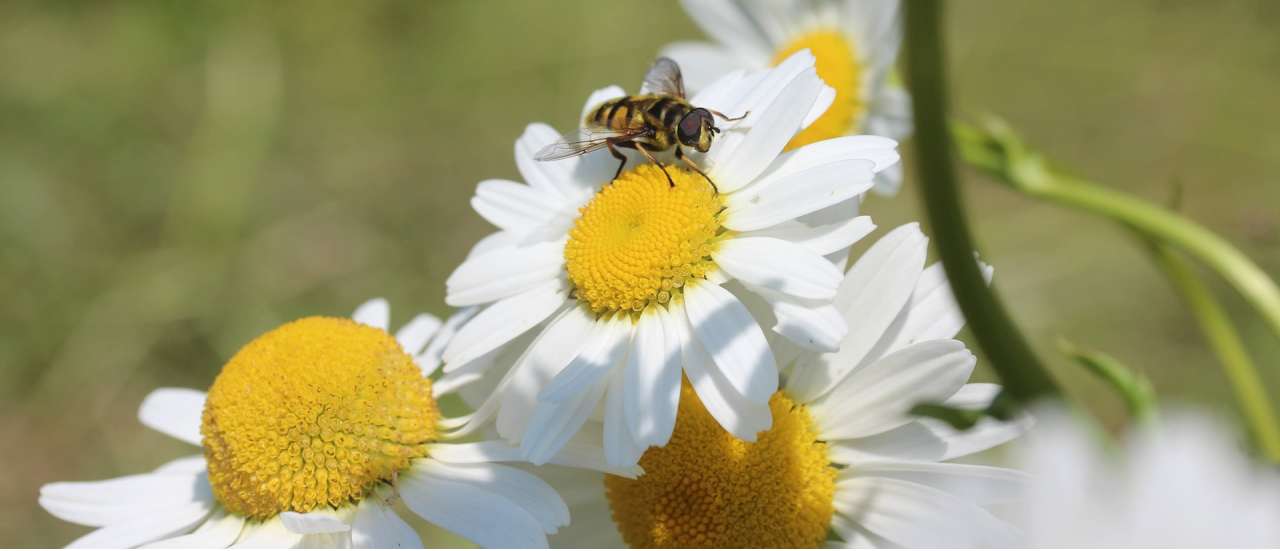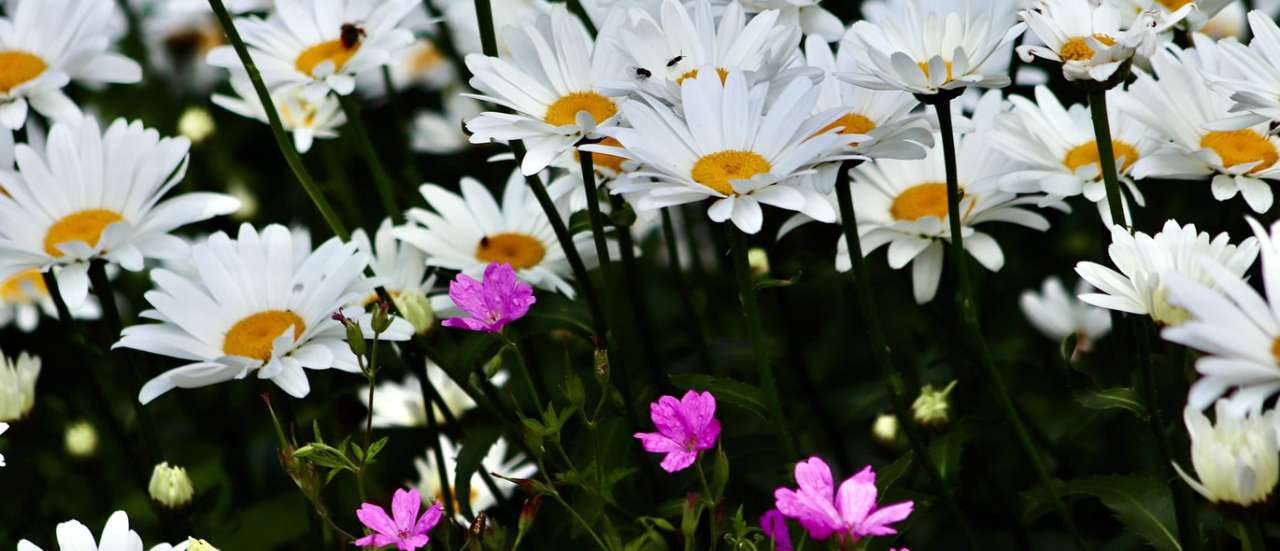Leucanthemums, or 'Shasta Daisies' are a popular plant for gardens as they generally flower over a long period, from summer into autumn, are easy to grow, require little maintenance and attract a wide range of pollinators. Most have a ring of white petals around a yellow centre, typical of the daisy family, and come in a range of sizes. Some newer varieties come in shades of cream and yellow and can be double, semi-double and even have frilly or quilled petals
They are a perfect addition to borders and cottage garden planting schemes and continually perform well in our Irish climate given the right spot.

Where and How to grow:
Leucanthemums are best grown in a sunny position in ground that is moist but drains easily. They will tolerate some shade but they won't last in soil that is continually waterlogged or excessively dry. You can even grow more compact varieties in pots or at border edges
In terms of planting Leucanthemums, they are best planted in autumn or early spring. Summer planting is fine as long as you don't let the soil dry out for too long (which doesn't seem to be too much of a problem here in the north-west of Ireland!). It is best to water regularly through the drier months or weeks to get the new plants fully established. For the planting itself you can follow similar rules other perennials:
- Dig a hole as deep as the pot they are in and up to twice as wide.
- Add some compost or leaf-mould to the bottom of the hole just to give the plants an additional boost of organic matter.
- Remove the plant from its pot, loosening any roots that may have become pot-bound (it's always good practice to give the pot a good watering an hour or so beforehand).
- Position the root-ball to the centre of the hole, making sure that the ground is level with the soil level in the pot – be sure not to plant it any deeper.
- Once positioned, you can then start to backfill the hole, gently firm the plant in and give it a good watering.
- For pots, use a compost containing loam such as John Innes
Leucanthemum care:
Leucanthemums are pretty low maintenance in terms of care. You may need to stake larger varieties and it is best to have any supports added in spring so that the plants can grow into them. If you leave adding supports or stakes to the last minute it can often be a messy job trying to get them in place. Deadhead regularly for prolonged flowering and to keep that fresh look to your plants. Once flowering comes to an end in autumn, all you have to do then is cut back the old dead stems, or you can leave this until early spring as new growth emerges again.
Other than that just make sure they have enough water until established and for best results give them an annual feed in the early spring (a slow release fertiliser is ideal) and a mulch in autumn
Propagation:
These plants are most easily propagated by division, which can be done every 2-3 years. This is best done in early spring or late autumn when the plants are not in their growth phase, but these are pretty tough plants so you can divide in summer as long as you make sure they are well watered afterwards, as you would if you were planting a newly bought plant.
They are pretty straight forward to divide. Just dig up the whole clump and then prize sections apart. Depending on how long they've been in, and how large the clump, you may need to put two garden forks in (back to back) and prize the sections apart or sever the two sections apart with a spade. Once divided you can just plant the divisions as above
Planting Companions
The key thing with planting 'companions' is to ensure you put plants together that thrive in similar conditions, so in this case you are looking for plants that will love a sunny spot with moist but well drained soil. Here are a few we recommend:
- Roses
The beauty of planting roses amongst Shasta daisies is that they generally require similar growing conditions and the white petals of most leucanthemum varieties provide a great backdrop to the more vibrant coloured rose blooms which will make them really stand out in the garden. The Shasta will also provide good ground cover around the base of your rose plants, improve soil structure and suppress some weeds - Campanula
The blue varieties in particular look great as a contrasting flower - Crocosmia
Planted in front of or amongst a variety such as Crocosmia 'Lucifer' can really make the vibrant red flowers stand out, or for a more subtle approach, plant amongst yellow or orange varieties like Crocosmia 'George Davidson' or 'Emily McKenzie' - Salvias
Select a hardy variety like 'Mainacht' that will tolerate more moist ground conditions over winter - Geraniums
Last but not least, hardy geraniums are a great companion for Shasta daisies as they come in a wide variety of colours and combined make a lovely, low maintenance, flowering border. Be sure to pick a variety that flowers through summer and autumn, like Geranium Rozanne.
 Check out our full range of leucanthemums available online or drop into one of our stores in Boyle or Roscommon Town.
Check out our full range of leucanthemums available online or drop into one of our stores in Boyle or Roscommon Town.








